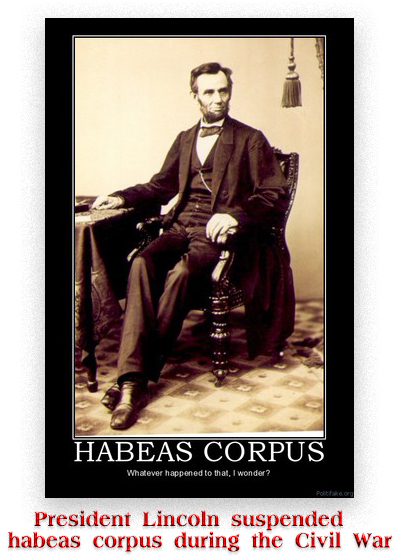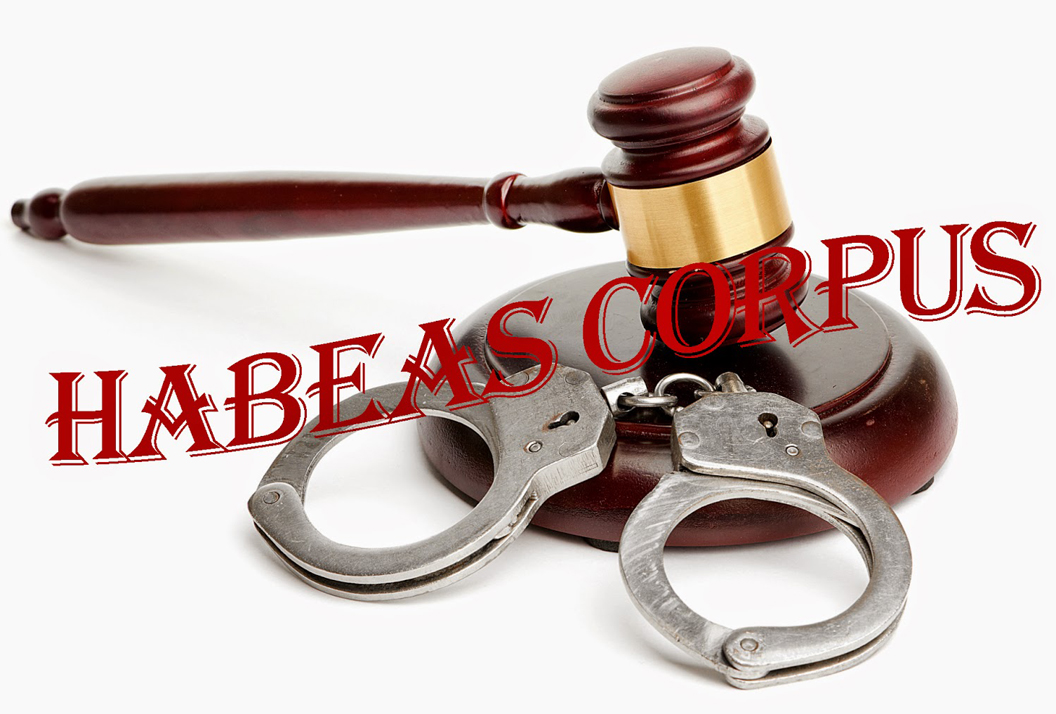We post news and comment on federal criminal justice issues, focused primarily on trial and post-conviction matters, legislative initiatives, and sentencing issues.

2241 PETITION IS SELDOM A SUBSTITUTE FOR A 2255
 I would be writing this newsletter from the beach of my own Caribbean island if I had a dime for every guy who tells me he wants to file a petition for habeas corpus under 28 USC § 2241 petition because his 28 USC § 2255 habeas motion has already been denied. It just doesn’t work like that, as the 8th Circuit reminded a defendant last week.
I would be writing this newsletter from the beach of my own Caribbean island if I had a dime for every guy who tells me he wants to file a petition for habeas corpus under 28 USC § 2241 petition because his 28 USC § 2255 habeas motion has already been denied. It just doesn’t work like that, as the 8th Circuit reminded a defendant last week.
Some quick history: “habeas corpus” is convenient shorthand for “writ of habeas corpus,” which is a judicial command to jailer to produce the “body,” that is, produce the prisoner in court and show by what right that person is being detained. The right was crucial back in the day when the King could jail anyone for anything and hold the prisoner without ever bringing him to court. The right of habeas corpus was so universally assumed to exist that the Constitution only mentions it as an exception, permitting the president to suspend habeas corpus during time of war. The only presidents to actually do that were Lincoln, Grant and FDR.
 Congress has passed statutes to regulate the use of habeas corpus. Under 28 USC § 2255, a Federal prisoner may challenge the lawfulness of his or her conviction or sentence. If it is the lawfulness of the detention being challenged – for example, how the Bureau of Prisons calculates the termination of a sentence – then a petition for habeas corpus under 28 USC § 2241 is filed.
Congress has passed statutes to regulate the use of habeas corpus. Under 28 USC § 2255, a Federal prisoner may challenge the lawfulness of his or her conviction or sentence. If it is the lawfulness of the detention being challenged – for example, how the Bureau of Prisons calculates the termination of a sentence – then a petition for habeas corpus under 28 USC § 2241 is filed.
The law places severe limitations on when a § 2255 motion may be filed, and whether a second one may be filed at all. Some prisoners think that to get around these § 2255 limitations, all they need to do is file a § 2241. Not so.
Chris Lee had been released from a prior federal sentence, and was serving a term of supervised release (sort of like parole) when he picked up some new fraud charges. The judge hearing the SR revocation gave Chris 35 months, but said that the time would be concurrent with anything he got on the new charges. But a different judge handling the new case gave him 57 months, and ordered it would be consecutive with the 35 months he got on the supervised release revocation.
Chris filed a § 2255 motion with his revocation judge, asking that the SR sentence be vacated and then reimposed so that as the later sentence, the BOP would have to run it concurrent regardless of what the 57-month sentence said. But he did not file the § 2255 motion on the right form, so the SR court sent it back for him to fix and refile.
But Chris did not do that. Instead, he filed a § 2241 petition in the district where he was locked up, arguing the BOP was wrong to run the sentences consecutively where the SR sentence said it was to be concurrent. The district where he filed said that the remedy he sought was really one available in a § 2255 motion, and sent it back to his SR judge, who held that the BOP’s interpretation was reasonable and therefore denied the petition.
 Last week, the 8th Circuit denied it for a completely different reason, holding that it lacked subject-matter jurisdiction to hear the appeal unless Chris could show that “the remedy under § 2255 would be inadequate or ineffective.” This showing — required by the § 2255(e) “savings clause” — is tough to make. A § 2255 remedy is not inadequate just because a petitioner has already used up his one shot at a § 2255, or where the petitioner was unaware of his claim when the § 2255 was filed, or even if no § 2255 has ever been filed and the time to do so has passed.
Last week, the 8th Circuit denied it for a completely different reason, holding that it lacked subject-matter jurisdiction to hear the appeal unless Chris could show that “the remedy under § 2255 would be inadequate or ineffective.” This showing — required by the § 2255(e) “savings clause” — is tough to make. A § 2255 remedy is not inadequate just because a petitioner has already used up his one shot at a § 2255, or where the petitioner was unaware of his claim when the § 2255 was filed, or even if no § 2255 has ever been filed and the time to do so has passed.
Here, Chris failed to show that he was unable to pursue his desired relief by filing a § 2255 motion with the sentencing judge. Had the sentencing judge been persuaded by Chris’ arguments, the Circuit said, he could have had his sentence vacated. Had the sentencing judge denied his petition, he could have appealed that decision. But what he could not do is “forgo a decision on a § 2255 petition in the sentencing court in favor of pursuing a § 2241 petition somewhere else.”
Lee v. Sanders, 2019 U.S. App. LEXIS 35853 (8th Cir Dec. 3, 2019)
– Thomas L. Root

